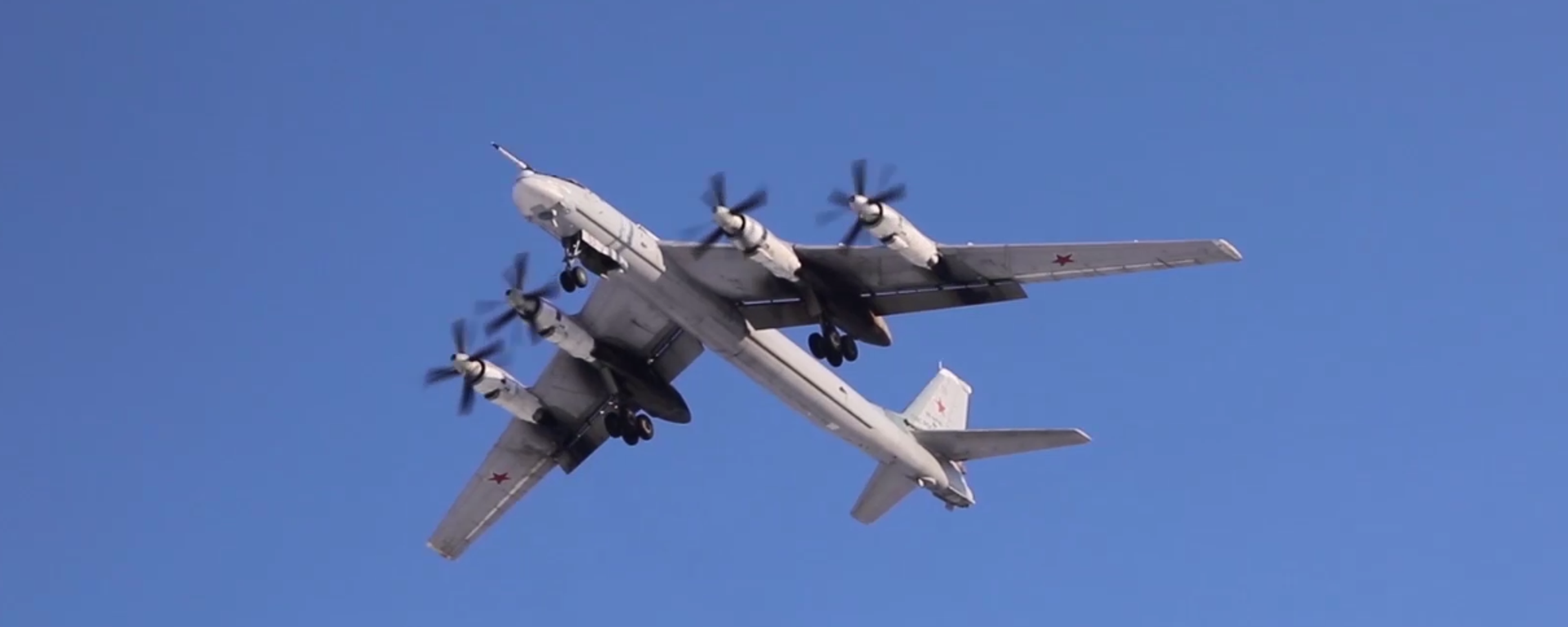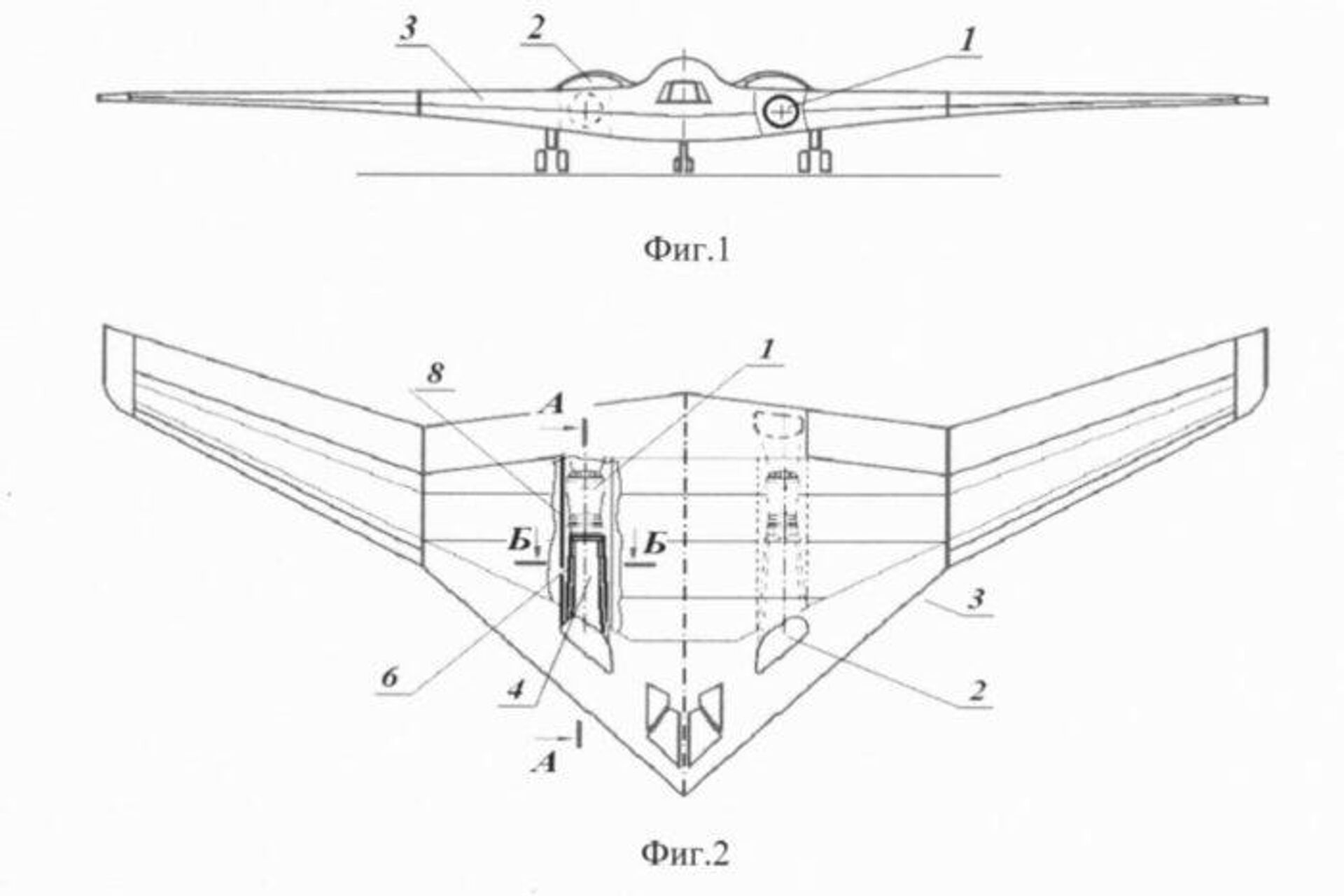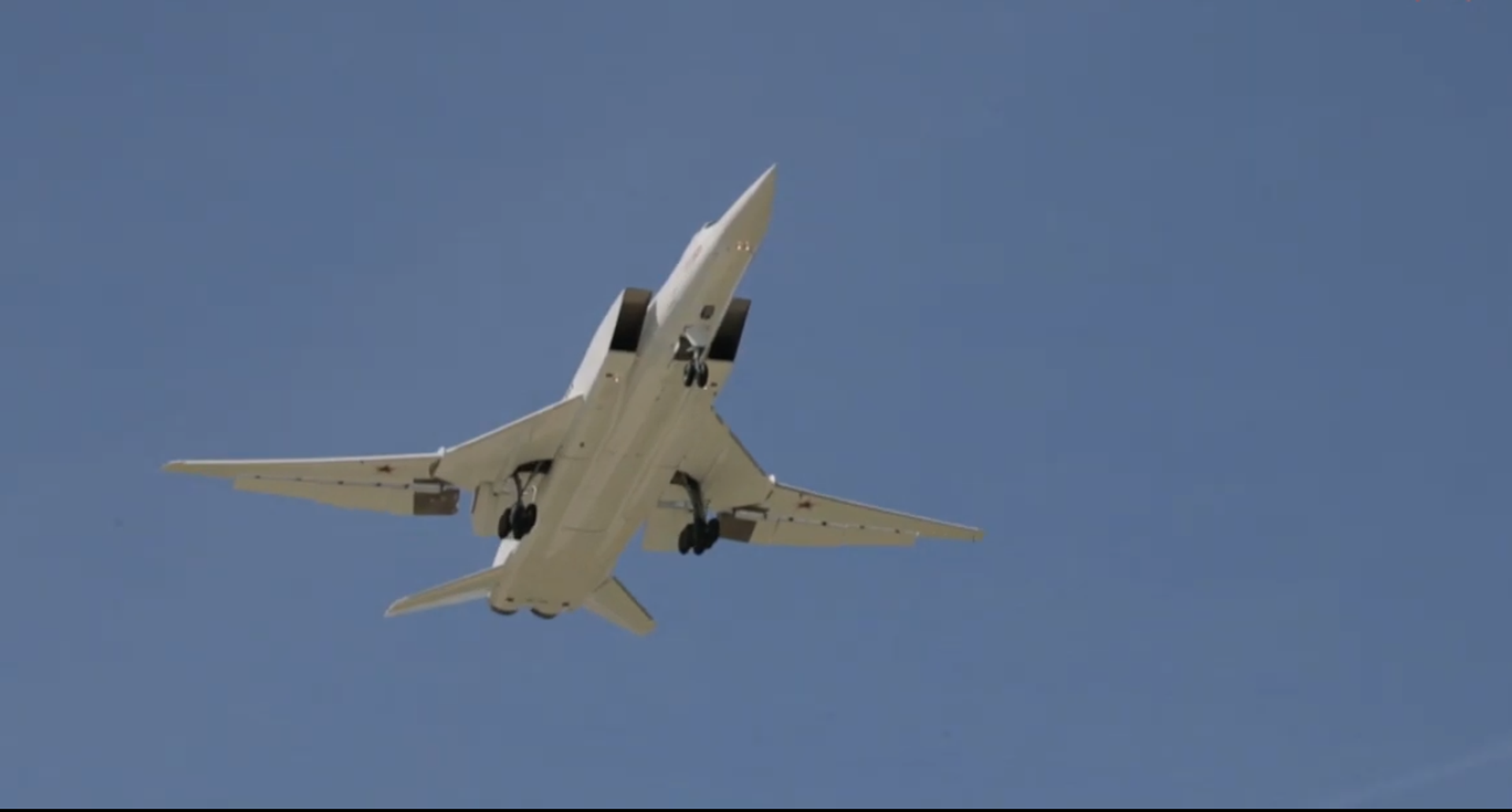https://sputnikglobe.com/20231215/russia-builds-test-facilities-for-next-gen-pak-da-bomber-whats-next-1115606302.html
Russia Builds Test Facilities for Next-Gen PAK-DA Bomber: What's Next?
Russia Builds Test Facilities for Next-Gen PAK-DA Bomber: What's Next?
Sputnik International
Russia’s Tupolev Design Bureau has been working on its prospective next generation long-range stealth bomber since the late 2000s. When fielded, the new aircraft are expected to gradually begin replacing the workhorse Tu-95 Bear, Tu-160 White Swan and Tu-22M maritime strike bombers currently in service with the Russian Aerospace Forces.
2023-12-15T16:34+0000
2023-12-15T16:34+0000
2023-12-15T16:34+0000
military
military & intelligence
russia
ussr
russian aerospace forces
tupolev design bureau
pak-da
tu-22m
tu-95 bear
bomber
https://cdn1.img.sputnikglobe.com/img/07e7/0c/0f/1115605887_0:0:1920:1080_1920x0_80_0_0_2d4c67cabbf0f94a3049297d88db7324.jpg
Tupolev parent Rostec Corporation has revealed the completion of a testing facility and test benches for Russia’s next-gen strategic bomber.In aviation, test benches are used to confirm the soundness of an aircraft's design in a controlled environment, and can test everything from aerodynamic concepts and hull and airframe strength to onboard equipment and engines.The PAK-DA program's existence was revealed in the mid-2010s, but details on the prospective aircraft's characteristics have remained few and far between, with observers relying on a sprinkling of news reports for information on the aircraft’s characteristics and progress in its development. In 2019, for example, Russia’s deputy defense minister revealed that the bomber’s preliminary design had been approved, and that Tupolev had started work on design documentation.In 2022, it was reported that prototypes of the bomber’s engines, codenamed ‘Izdeliye RF’ (lit. ‘Product RF’) were undergoing testing.Based on available information, the PAK-DA, also tentatively known as Poslannik (lit. ‘Messenger’) and Izdeliye 80 (lit. ‘Product 80’) is expected to be built on a flying wing platform, and feature material design and onboard equipment which dramatically reduces its radar signature.Development of the PAK-DA concept formally kicked off in the late 2000s, with officials indicating in the late 2010s that the bomber would enter operational service with the military by the year 2027, and that mass production would start before the end of the decade. However, if the creation and production of the Sukhoi Su-57 (formerly PAK-FA) fighter aircraft is anything to go by, the timeline for the PAK-DA’s deployment could move forward several years.As with other new Russian manned aircraft, the strategic bomber will be able to carry an array of existing long-range Russian air-launched missiles, cruise missiles and hypersonic weapons, and be future-proofed to be able to deploy new munitions as they become available. Additionally, the subsonic combat platform is expected to be equipped with the latest Russian communications and electronic warfare systems.The PAK-DA is meant in part to replace the Tu-95 – the long-time workhorse of Soviet and Russian aviation which goes back all the way to the 1950s, and the Tu-160 – the late-Soviet era variable sweep wing strategic bomber which proved so successful that production of a modernized variant was recently restarted.Further details on the PAK-DA’s characteristics remain scarce, although information floating around online references a 12,000-15,000 operational range, the ability to remain airborne for up to 30 hours at a time without refueling, a four-man crew, and the ability to carry up to 30 tons worth of munitions. These figures should be taken with a grain of salt.Other information – such as onboard air defenses and composite materials used, are even murkier, owing both to the project’s secrecy and the early stage of its development.What is known however is that Russia and the USSR have had extensive, best-in-the-world experience in the design of cutting edge aircraft going back all the way to the 1920s and aviation engineer Boris Cheranovsky’s BICh-1 Parabola experimental flying wing glider.The post-WWII period would witness the apogee of revolutionary flying wing aircraft designs, with Soviet engineers tinkering with the turbojet-engine propelled BICh-24, 25 and 26 jet fighter concepts, and pouring resources into the creation of the DSB-LK strategic bomber, all during the 1950s and early 1960s –the dawn of both the space and turbojet aviation ages.The DSB-LK was to have a takeoff weight of between 250-280 tons, a 36.8-37.6 meter wingspan, a length of nearly 46 meters, six engines with afterburner, a top speed of up to Mach 2.8, a flight ceiling up to 35,000 feet, and a combat load of between five and fifteen tons.The futuristic fighter flying wing designs were scrapped in favor of more conventional airframes, their production deemed too costly, while the prospective DSB-LK bomber was shelved thanks to the success of the Soviet intercontinental ballistic missile program, which rendered the use of bombers for long-range strategic deterrence moot. Nevertheless, the DSB-LK program offered Soviet aircraft designers invaluable insights for future designs, with some features clearly visible in later series aircraft including the Tu-22M.The PAK-DA promises to be a fundamentally new aircraft, so how much it will draw on revolutionary design ideas of years and decades past remains unclear."A test base is the place where the strength of the body, the airframe, fuselage and wings are to be tested...In other words, roughly speaking, one of the first prototypes of the aircraft will be placed in this test base for strength testing and be broken up" using special jacks, Kornev explained. A second prototype will subsequently be prepared for the prospective aircraft's maiden flight, if it is determined by the general designer that it is safe to do so."The preparation of a test bench subsequently means that the creation of the final version of the aircraft is very close," the observer explained.The closest foreign analogue to the new Russian bomber is the American B2 and B21 stealth bombers, in Kornev estimation.Once the aircraft takes to the skies, Kornev expects the PAK-DA to gradually replace the Tu-95MS, the Tu-22M and the Tu-160, becoming the primary means of Russia’s long-range strategic aviation by the middle of the century, and remaining so all the way until its close.
https://sputnikglobe.com/20230215/watch-russian-bear-bombers-patrol-off-alaska-amid-americas-balloon-mania-1107457877.html
https://sputnikglobe.com/20201103/russias-modernized-tu-160m-strategic-bomber-makes-1st-flight-with-new-engines-1080972802.html
russia
ussr
Sputnik International
feedback@sputniknews.com
+74956456601
MIA „Rosiya Segodnya“
2023
News
en_EN
Sputnik International
feedback@sputniknews.com
+74956456601
MIA „Rosiya Segodnya“
Sputnik International
feedback@sputniknews.com
+74956456601
MIA „Rosiya Segodnya“
pak-da, bomber, strategic bomber, aircraft, testing, design, next-generation, gen, generation, development, creation, long range, missile, cruise missile, hypersonic missile
pak-da, bomber, strategic bomber, aircraft, testing, design, next-generation, gen, generation, development, creation, long range, missile, cruise missile, hypersonic missile
Russia Builds Test Facilities for Next-Gen PAK-DA Bomber: What's Next?
Russia’s Tupolev Design Bureau has been working on its prospective next generation long-range stealth bomber since the late 2000s. When fielded, the new aircraft are expected to gradually begin replacing the workhorse Tu-95 Bear, Tu-160 White Swan and Tu-22M maritime strike bombers currently in service with the Russian Aerospace Forces.
Tupolev parent Rostec Corporation has revealed the completion of a testing facility and test benches for Russia’s next-gen strategic bomber.
“As part of the ‘Advanced Aviation Complex for Long-Range Aviation’ [Russian acronym PAK-DA, ed.] specialists have carried out the full cycle of research and development and experimental design work for creating a testing base and set of test benches,” the company said in a press release last week.
In aviation, test benches are used to confirm the soundness of an aircraft's design in a controlled environment, and can test everything from aerodynamic concepts and hull and airframe strength to onboard equipment and engines.
The PAK-DA program's existence was revealed in the mid-2010s, but details on the prospective aircraft's characteristics have remained few and far between, with observers relying on a sprinkling of news reports for information on the aircraft’s characteristics and progress in its development. In 2019, for example, Russia’s deputy defense minister revealed that the bomber’s preliminary design had been approved, and that Tupolev had started work on design documentation.
In 2022, it was reported that prototypes of the bomber’s engines, codenamed ‘Izdeliye RF’ (lit. ‘Product RF’) were undergoing testing.
Based on available information, the PAK-DA, also tentatively known as Poslannik (lit. ‘Messenger’) and Izdeliye 80 (lit. ‘Product 80’) is expected to be built on a flying wing platform, and feature material design and onboard equipment which dramatically reduces its radar signature.
Development of the PAK-DA concept formally kicked off in the late 2000s, with officials
indicating in the late 2010s that the bomber would enter operational service with the military by the year 2027, and that mass production would start before the end of the decade. However, if the creation and production of the
Sukhoi Su-57 (formerly PAK-FA) fighter aircraft is anything to go by, the timeline for the PAK-DA’s deployment could move forward several years.
As with other new Russian manned aircraft, the strategic bomber will be able to carry an array of existing long-range Russian air-launched missiles, cruise missiles and hypersonic weapons, and be future-proofed to be able to deploy new munitions as they become available. Additionally, the subsonic combat platform is expected to be equipped with the latest Russian communications and electronic warfare systems.
The PAK-DA is meant in part to replace the Tu-95 – the long-time workhorse of Soviet and Russian aviation which goes back all the way to the 1950s, and the Tu-160 – the late-Soviet era variable sweep wing strategic bomber which proved so successful that production of a modernized variant was recently restarted.

15 February 2023, 10:36 GMT
Further details on the PAK-DA’s characteristics remain scarce, although information floating around online references a 12,000-15,000 operational range, the ability to remain airborne for up to 30 hours at a time without refueling, a four-man crew, and the ability to carry up to 30 tons worth of munitions. These figures should be taken with a grain of salt.
Other information – such as onboard air defenses and composite materials used, are even murkier, owing both to the project’s secrecy and the early stage of its development.
What is known however is that Russia and the USSR have had extensive, best-in-the-world experience in the design of cutting edge aircraft going back all the way to the 1920s and aviation engineer Boris Cheranovsky’s BICh-1 Parabola experimental flying wing glider.
The post-WWII period would witness the apogee of revolutionary flying wing aircraft designs, with Soviet engineers tinkering with the turbojet-engine propelled BICh-24, 25 and 26 jet fighter concepts, and pouring resources into the creation of the DSB-LK strategic bomber, all during the 1950s and early 1960s –the dawn of both the space and turbojet aviation ages.
The DSB-LK was to have a takeoff weight of between 250-280 tons, a 36.8-37.6 meter wingspan, a length of nearly 46 meters, six engines with afterburner, a top speed of up to Mach 2.8, a flight ceiling up to 35,000 feet, and a combat load of between five and fifteen tons.
The futuristic fighter flying wing designs were scrapped in favor of more conventional airframes, their production deemed too costly, while the prospective DSB-LK bomber was shelved thanks to the success of the Soviet intercontinental ballistic missile program, which rendered the use of bombers for long-range strategic deterrence moot. Nevertheless, the DSB-LK program offered Soviet aircraft designers invaluable insights for future designs, with some features clearly visible in later series aircraft including the Tu-22M.
The PAK-DA promises to be a fundamentally new aircraft, so how much it will draw on revolutionary design ideas of years and decades past remains unclear.
“The PAK-DA is a promising long-range aviation complex. It is a promising strategic bomber for the Russian Aerospace Forces. Work on the project has been going on for quite some time. Judging by the recent news, if the preparation of [testing facilities] has been completed...this means that the development of this aircraft is nearing completion, which means prototypes should already be under construction,” Dmitry Kornev, founder of the MilitaryRussia.ru news portal, told Sputnik.
"A test base is the place where the strength of the body, the airframe, fuselage and wings are to be tested...In other words, roughly speaking, one of the first prototypes of the aircraft will be placed in this test base for strength testing and be broken up" using special jacks, Kornev explained. A second prototype will subsequently be prepared for the prospective aircraft's maiden flight, if it is determined by the general designer that it is safe to do so.
"The preparation of a test bench subsequently means that the creation of the final version of the aircraft is very close," the observer explained.
The closest foreign analogue to the new Russian bomber is the American B2 and B21 stealth bombers, in Kornev estimation.
“This is an aircraft that will use radar signature reduction technologies. Judging by available information, it is a long-range flying wing design, with an intercontinental range…The plane is heavy and will probably have four engines. But here we must immediately make a reservation here: we do not know the characteristics of or information on this aircraft. For now, this is absolutely classified information. We are simply proceeding from assumptions and crumbs of information that have been released into the public domain,” the military observer stressed.
Once the aircraft takes to the skies, Kornev expects the PAK-DA to gradually replace the Tu-95MS, the Tu-22M and the Tu-160, becoming the primary means of Russia’s long-range strategic aviation by the middle of the century, and remaining so all the way until its close.

3 November 2020, 17:15 GMT









